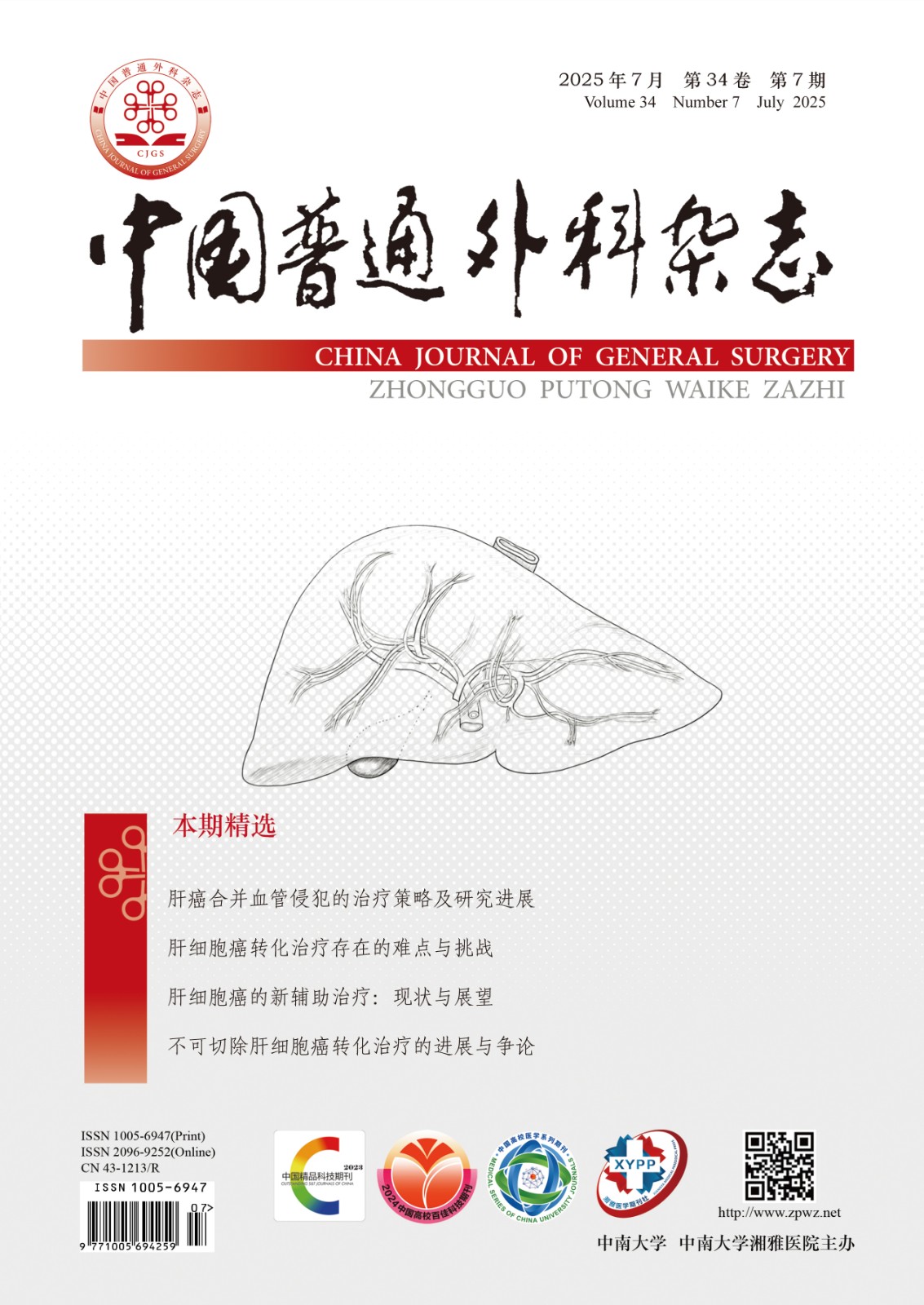Abstract:Abstract:Objective To summarize our experience in diagnosis and surgical treatment of nonfunctioning pancreatic neuroendocrine carcinoma (NPNEC).
Methods The clinical data of 18 cases of NPNEC, including Group A those with liver metastasis, n=8; Group B those without liver metastasis, n=10, from 1985 to 2004 were retrospectively reviewed. Operations were performed in 16 cases, interventional procedures in 15 cases, and nonoperative treatment in 2 cases respectively. The markers of neuroendocrine cell (CgA, NSE, Syn) and the main peptide hormones (insulin, gastrin, glucagon, VIP, and somatostatin) were examined in tumor samples with immunohistochemistry method.
Results Group A and B were similar with respect to age (year) and tumor diameter (cm) at diagnosis (40.50±12.54 vs 51.60±12.85, and 8.45±5.12 vs 6.26±3.65, respectively; P>0.05). Positive expression of 2 or all 3 markers of neuroendocrine cell was detected in all 16 samples; negative expression of all 5 peptide hormones was observed in only 25% of samples. At a mean followup of 44.2 months (range 4 months-7 years ), the mean time from resection to relapse or metastasis was 29.8 months; 7 cases survived more than 5 years, of which 2 have survived for 7 years. Two cases, who subjected nonoperative treatment, survired 39,61 months, respectively.
Conclusions Clinical manifestations of NPNEC are nonspecific. Only a few tumors in NPNEC patients do not yield peptide hormones. Treatment of NPNEC (including patients with liver metastasis) with aggressive surgical resection followed by interventional methods can result in excellent overall longterm survival.

